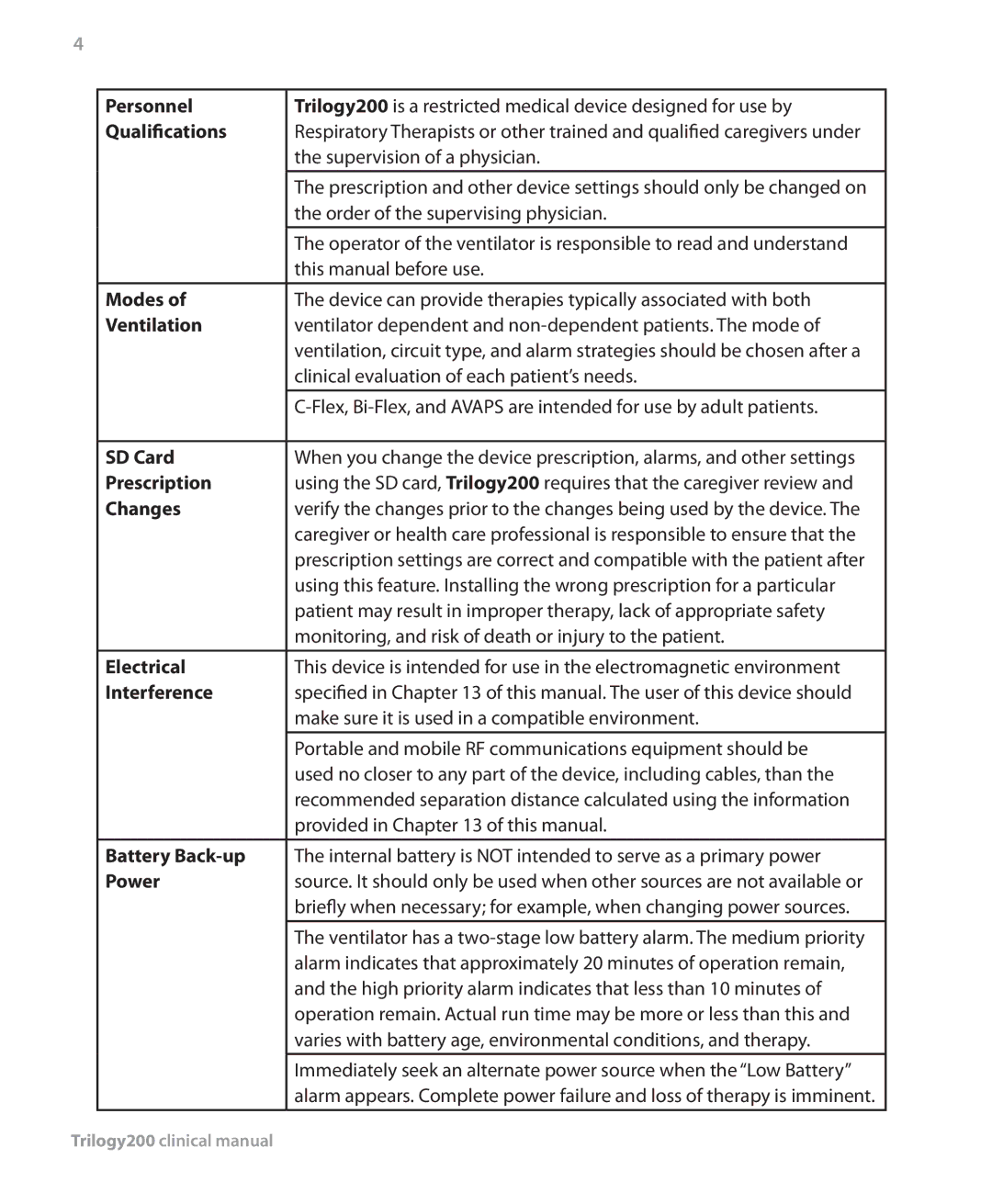4
Personnel | Trilogy200 is a restricted medical device designed for use by |
Qualifications | Respiratory Therapists or other trained and qualified caregivers under |
| the supervision of a physician. |
| The prescription and other device settings should only be changed on |
| the order of the supervising physician. |
| The operator of the ventilator is responsible to read and understand |
| this manual before use. |
Modes of | The device can provide therapies typically associated with both |
Ventilation | ventilator dependent and |
| ventilation, circuit type, and alarm strategies should be chosen after a |
| clinical evaluation of each patient’s needs. |
| |
|
|
SD Card | When you change the device prescription, alarms, and other settings |
Prescription | using the SD card, Trilogy200 requires that the caregiver review and |
Changes | verify the changes prior to the changes being used by the device. The |
| caregiver or health care professional is responsible to ensure that the |
| prescription settings are correct and compatible with the patient after |
| using this feature. Installing the wrong prescription for a particular |
| patient may result in improper therapy, lack of appropriate safety |
| monitoring, and risk of death or injury to the patient. |
Electrical | This device is intended for use in the electromagnetic environment |
Interference | specified in Chapter 13 of this manual. The user of this device should |
| make sure it is used in a compatible environment. |
| Portable and mobile RF communications equipment should be |
| used no closer to any part of the device, including cables, than the |
| recommended separation distance calculated using the information |
| provided in Chapter 13 of this manual. |
Battery | The internal battery is NOT intended to serve as a primary power |
Power | source. It should only be used when other sources are not available or |
| briefly when necessary; for example, when changing power sources. |
| The ventilator has a |
| alarm indicates that approximately 20 minutes of operation remain, |
| and the high priority alarm indicates that less than 10 minutes of |
| operation remain. Actual run time may be more or less than this and |
| varies with battery age, environmental conditions, and therapy. |
| Immediately seek an alternate power source when the “Low Battery” |
| alarm appears. Complete power failure and loss of therapy is imminent. |
Trilogy200 clinical manual
